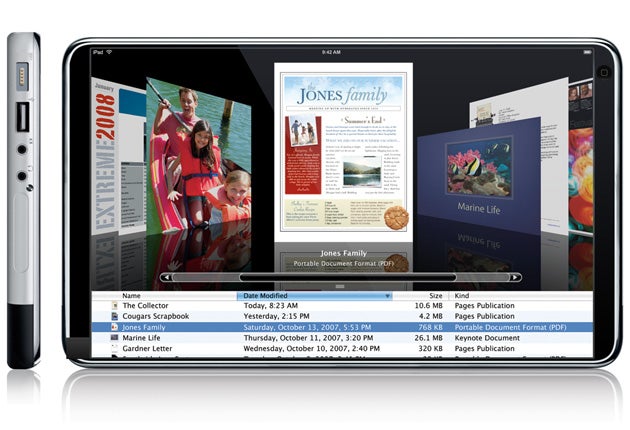Can Apple save the written word?
Newspapers and magazines hope new computer will do for them what the iPod did for the music industry

Nowhere is next week's launch by Apple of its new tablet device more breathlessly awaited than in the executive offices of traditional publishing houses. For the tablet – or the iSlate or the iPad as it may become known – is regarded as a possible saviour for newspapers, magazines and textbooks.
There are electronic reading devices in existence already, such as Sony's e-Reader and Amazon's Kindle. But, publishers hope the unquestioned design talents of Apple will ensure that its latest product is the vehicle that enables them to transform their business models. After all, the iPod has converted millions to the idea of paying to download songs and, to a degree, has revived the music industry, becoming the world's largest music retailer in the process. The iPhone has created a culture of acquiring apps for "just about anything", many of them paid for.
Newspaper content is already being widely consumed on smart mobile phones but mostly for free. With a touch screen of 10-11 inches, the Apple tablet presents publishers of all kinds with the opportunity to create an entirely new reader experience, one that consumers might be persuaded to pay for.
David Rowan, editor of the UK edition of the technology magazine Wired, said that the size of the tablet screen could mean that readers enjoyed a "comparable experience" to reading a magazine. Innovative publishers would be offered myriad opportunities, such as accompanying an article on a film director with video footage, or a recipe piece with touch screen links to ingredients.
But he warned against the idea of thinking that the tablet would replace glossy magazines. "The reason there is a buzz of excitement in the publishing industry is that it has been a very scary 18 months for a lot of existing big media companies and people are looking for a golden solution," he said. "I don't think it will be that but it's an opportunity for innovative companies to find extra ways of building an audience."
One obstacle with the Apple tablet may be price – likely to be $1,000 in the US or £1,000 in Britain, including VAT. Then there is portability. Many consumers are very happy with the petite nature of a smart phone, having paid out for a Google Android or an iPhone. "Am I going to want to carry a delicate, solid, 10-inch screen?" wondered Rowan. "I don't see that many people with Kindles and eReaders when I'm out and about."
Neil Robinson, digital director at IPC Media, agreed there was a hope that Apple would unveil a device with a user interface of revolutionary design. "Arguably Apple offers us the best opportunity so far for an interactive device," he said. "Hopefully it will be quite a significant step forward." He said publishers needed such a device to provide an attractive platform for advertisers, who have been reluctant to take their business to magazine websites.
In reality, Apple needs the publishers – and their journalism – as much as they need it. Taiwanese company Micro-Star launched a tablet two years ago which failed partly because it carried insufficient access to content. Jobs and his team are in talks with Rupert Murdoch's News Corp, the New York Times Co. and magazine publishers such as Conde Nast and television networks including CBS and Disney.
The New York Times this week announced that it would be demanding payment for access to its website and industry observers say that the newspaper publisher is discussing with Apple whether it could begin charging for news through iTunes.
The Financial Times is looking at a micropayment system of paying for individual articles. The FT's publisher Pearson is also a major producer of textbooks, and it is possible that the Apple tablet could be more successful than the Kindle in providing an interactive touchscreen platform that allows students to read books while accessing related video content and information relating to their personal course work.
"We welcome innovations that allow students and other learners to access our content at any time and any place," said a company spokesman yesterday. Over to you Mr Jobs.
Apple vision: Building the future
HITS
iMac (1998): The brightly-coloured desktop computer is now regarded as a classic of late '90s design, and it had the performance to match.
*iPod (2001): The small, stylish music player swept away all of its competition in the MP3 market.
*iPhone (2007): Easy-to-use internet access coupled with Apple's ingenious "App Store" ensured a winner.
MISSES
*Newton Messagepad (1993): One of the earliest PDAs (personal digital assistant), its handwriting recognition system was frustratingly inaccurate.
*G4 Cube (2000): It looked good compared to other desktop computers of the time, but critics complained was too expensive and cracks appeared in its clear plastic casing.
Join our commenting forum
Join thought-provoking conversations, follow other Independent readers and see their replies
Comments